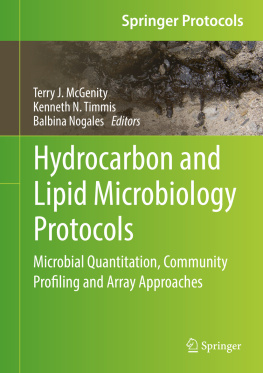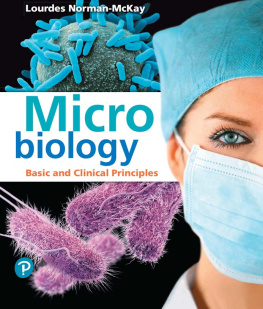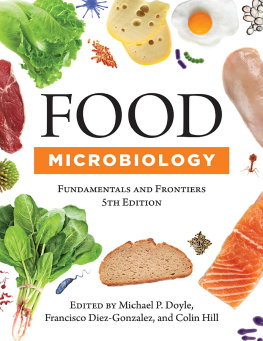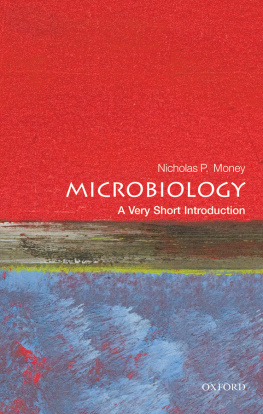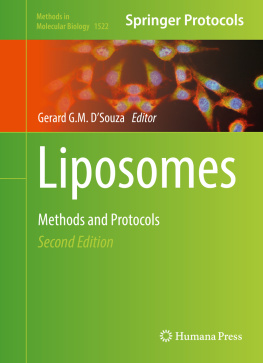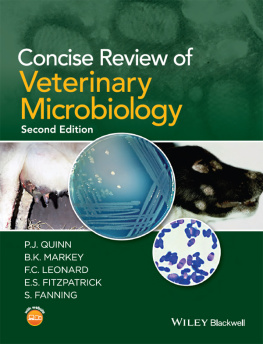Main Text
Given that most recent developments in cultivation-independent analysis of microbial communities have involved DNA-based approaches, especially with the advent of high-throughput sequencing, there is a tendency to overlook a strong foundation of relatively standardized methods that are uniquely able to answer specific questions posed by microbiologists. Cultivation is one of these foundational and irreplaceable methods []. Without cultivation, the function and metabolic capabilities of a microorganism cannot be determined conclusively. The methods that are highlighted in this volume are broad ranging because they are uniquely capable of answering specific questions about microbial communities. As you will see, this volume includes protocols for rapid profiling of microbial communities, high-throughput sequencing of specific genes, and both cultivation-dependent and cultivation-independent methods that can be used for quantification of microbial community members.
An important objective for many studies of microbial communities is to quantify specific microorganisms, at multiple taxonomic levels, within environmental samples. In these cases, the objectives go beyond a summary of relative abundance data, which are default in sequence-based analyses, and instead rely on determining the actual abundance of specific organisms within a sample of interest. For example, what happens to specific hydrocarbon degraders when a pristine environmental sample is exposed to hydrocarbon contamination? How do these heterotrophic populations change in abundance with respect to a certain dry weight of environmental sample? Because microbial biomass and its corresponding activity is linked to overall biogeochemical cycling, methods that count cells by microscopy, growth, or biomarker analyses, can provide important measures of a microbial abundance and corresponding functions. A protocol in this volume focuses on cell extraction from oily sediments for microscopy applications [].
As an alternative to quantifying cells by direct counting or MPN-based approaches, measurements of overall microbial biomass can be achieved by extraction and quantification of specific biomarkers. An important biomarker for such applications are lipids that are present as structural components of microbial membranes. The abundance of these lipids is correlated with overall microbial biomass, better so than DNA [].
Analyses of nucleic acids have become commonplace cultivation-independent methods for profiling and quantifying microbial communities. Methods for analysis of extracted nucleic acids usually address either the abundance of specific target organisms within microbial communities or overall microbial community composition. This volume includes a chapter describing targeted approaches for quantification of hydrocarbon-degrading bacterial communities using real-time PCR with extracted community nucleic acids as targets [], which can be either DNA or RNA. This protocol also provides important theoretical background for quantitative PCR and provides a valuable comparison of both TaqMan and SYBR Green assays.
For analyzing the composition of microbial communities, one chapter focuses on high-throughput sequencing of single gene amplicons, or meta-genetics, by presenting a comprehensive protocol for such analysis pipelines, from sample preparation to data handling and interpretation [] that describes both single-strand conformational polymorphism (SSCP) and terminal restriction fragment length polymorphism (T-RFLP).
This volume includes a protocol on clone library analysis [], clone library analyses enabled the targeted collection of high-quality sequences clone libraries were the optimal methodological choice for this analysis.
The techniques in this volume represent powerful molecular approaches for microbial community analysis. The diversity of these protocols reflects myriad specific questions microbiologists can ask about microbial communities. Highlighting this diversity of methods and applications, this volume includes additional boutique approaches for answering specific questions. For example, one chapter focuses on the study of protistan communities within hydrocarbon-contaminated environments [].
Although microbiologists have long been limited by a paucity of suitable methods for studying complex microbial communities, this is no longer the case. We are in an unprecedented era of discovery and access to appropriate methodology is no longer a barrier to conducting cutting-edge scientific research. Building on rapid method development and standardization, the goal of this volume on microbial quantitation and community profiling is to assist with exploring the impact of hydrocarbon contamination on microbial communities within environmental samples.
References
Nichols D (2007) Cultivation gives context to the microbial ecologist. FEMS Microbiol Ecol 60:351357 CrossRef PubMed
Lapp M, Kallmeyer J (2014) A cell extraction method for oily sediments. In: McGenity TJ, Timmis KN, Nogales Fernndez B (eds) Hydrocarbon and lipid microbiology protocols. Springer Protocols Handbooks
Edgcomb VP, Kysela DT, Teske A, de Vera Gomez A, Sogin ML (2002) Benthic eukaryotic diversity in the Guaymas Basin hydrothermal vent environment. Proc Natl Acad Sci USA 99:76587662 CrossRef PubMed PubMedCentral
Johnsen A (2014) Introduction to microplate MPN-enumeration of hydrocarbon degraders. In: McGenity TJ, Timmis KN, Nogales Fernndez B (eds) Hydrocarbon and lipid microbiology protocols. Springer Protocols Handbooks
Shen Y, Voordouw G (2015). Primers for dsr genes and most probable number method for detection of sulfate-reducing bacteria in oil reservoirs. In: McGenity TJ, Timmis KN, Nogales Fernndez B (eds) Hydrocarbon and lipid microbiology protocols. Springer Protocols Handbooks
Leckie SE, Prescott CE, Grayston SJ, Neufeld JD, Mohn WW (2004) Comparison of chloroform fumigation-extraction, phospholipid fatty acid, and DNA methods to determine microbial biomass in forest humus. Soil Biol Biochem 36:529532 CrossRef

